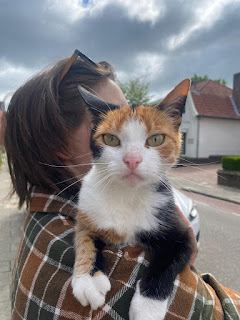PUMA activity
A few days ago in Amsterdam, we met with Meredith, a professor at University of Amsterdam, and we did what she calls the PUMA activity. In this activity we were to go to different areas of the city, interact with locals, and make observations of how the different areas of the city differed from each other.
The city was broken up into three sections: The canal district (the oldest and most touristy part of the city), the pre-war area, and the post-war area. I went with two other classmates first to the pre-war neighborhood, and then to the post-war one.
The pre-war neighborhood was much like you would expect from an old European city. Lots of rowhouses with multi-use buildings on the main streets and residential buildings spreading from them. There was a lot of diversity in the kinds of shops around, but not much diversity in the people using them. It was mostly affluent white people. We stood outside of a grocery store watching people come and go, noting what mode of transportation they were using, and unsurprisingly most people were either walking or biking with almost no one getting into a car.
When we got to the post-war area, it was a bit different.It was much more suburban feeling, with stand alone buildings and more space between things. The streets were also wider for cars and there was far more car parking available. There was also a lot more diversity and it seemed like there was a strong muslim population in the area. When we did the same grocery store exercize, this time we noticed far more people using cars to get there (walking and biking still was most prevalent). Something I noticed here was that the grocery store actually had shopping carts. Up until that point I hadn't seen a single shopping cart inside of a grocery store. This is because most people go to the store almost every day and only get what they could carry on a bike or walking (no need for a cart). But in this more car accessible area, people feel enabled to do larger shopping trips with more space between trips.
What I liked about this activity is that I got to see how in different areas of the city, people behave differently because the environment is slightly different. It seems like the newer the area of the city was, the more closely it resembled American cities. The core of American cities is much like the outskirts of European cities, and then as we continue to spread, we become something unrecognizable in Europe. The main reason why American cities are not as high quality is because they are too new and were built around the car leading to a more spread out living environment.
If there was one thing I would change about this activity it would be simply to have more time to complete it. We were given 24 hours to explore the city, but I think at least 48 hours would have been nice to fully examine all parts of the city.




Comments
Post a Comment